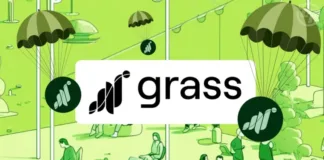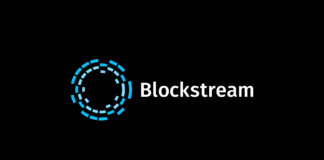Ethereum developers have agreed to split the upcoming Pectra upgrade into two phases, addressing concerns over its growing complexity. The decision, made on September 19, 2024, aims to minimize risks and ensure smoother implementation of Ethereum’s largest hard fork to date.
The first phase, targeted for early 2025, will include eight Ethereum Improvement Proposals (EIPs), focusing on wallet functionality enhancements. EIP-7702, notably drafted by Vitalik Buterin in just 22 minutes, is among these improvements.
The second phase remains flexible, potentially incorporating Ethereum Virtual Machine updates and PeerDAS for improved data availability on layer-2 blockchains. This phased approach allows developers to adapt to evolving needs while maintaining a manageable scope for each upgrade
The Ethereum blockchain, the dominant platform for smart contracts and a leading cryptocurrency, has been a hub of significant development and upgrades in recent years. As this blockchain technology continues to evolve, Ethereum developers have been grappling with the challenge of prioritizing and implementing the numerous proposals for improvement, known as Ethereum EIPs. In a move to navigate this complexity and align with the latest crypto trends, the Ethereum community has decided to split the highly anticipated ‘Pectra’ upgrade into two separate forks.
Ethereum’s Upgrade Landscape: Balancing Priorities
Ethereum has undergone several major upgrades in the past, with the latest one occurring just six months ago. However, the sheer volume of developer priorities and proposed enhancements on the Ethereum roadmap has created a situation where the entire ‘Pectra’ upgrade package has become unwieldy. Ethereum developers have recognized the need to approach these upgrades in a more measured and strategic manner to minimize risks and ensure smoother implementation, which is crucial for the future of Ethereum development.
Related Read: Rocky Rabbit Airdrop on 23rd Sept: Guide to claim $RBTC Tokens
The Growing Complexity of Ethereum Upgrades
The ‘Pectra’ upgrade, also known as Pectra 1, was initially slated to be Ethereum’s biggest hard fork to date, encompassing a comprehensive set of new features and improvements. However, as the development process progressed, some Ethereum developers expressed concerns about the growing complexity and potential risks associated with executing such a substantial software upgrade all at once.
The Desire for a More Incremental Approach
Recognizing the challenges posed by the scale and scope of the ‘Pectra’ upgrade, Ethereum developers began exploring the possibility of splitting the upgrade into two separate forks, with the second phase being referred to as Pectra 2. This approach aligns with the broader industry trend of favoring smaller, more manageable upgrades over large-scale, high-risk overhauls, which is essential for the long-term scaling and success of Ethereum.
The Plan to Split Pectra Upgrade: Reducing Risks and Accelerating Deployment
During a recent All Core Developers call, where Ethereum consensus is reached, developers agreed on the decision to split the ‘Pectra’ upgrade into two distinct phases. This strategic move aims to address the concerns raised about the complexity and potential risks associated with a single, monolithic upgrade, and is a significant development in the Ethereum news cycle.
Phase 1: Wallet Improvements and Efficiency Gains
The first phase of the ‘Pectra’ upgrade is set to include Ethereum Improvement Proposals (EIPs) focused on enhancing wallet functionality and overall system efficiency. This includes EIP-7702, a proposal famously scribbled by Ethereum co-founder Vitalik Buterin in just 22 minutes, which aims to improve the performance of smart contract wallets and Externally Owned Accounts.
Phase 2: Upgrading the Ethereum Virtual Machine
The second phase of the ‘Pectra’ upgrade, known as devnet 3, will concentrate on upgrades to the Ethereum Virtual Machine (EVM), known as the EOF (EVM Object Format) project. This component is responsible for the execution of smart contracts on the Ethereum network, and the proposed changes, including EIP 7251 and EIP 6110, are intended to further optimize and enhance its capabilities, leading to improved throughput growth.
Potential Timelines and Considerations
If the Ethereum developers reach a consensus on the split upgrade during their upcoming All Core Developers Consensus layer call, the first phase of the ‘Pectra’ upgrade could be launched as early as February 2025, bringing Ethereum 2025 one step closer. However, this timeline is still subject to further discussions and refinement within the Ethereum community and the Ethereum Foundation.
Balancing Priorities and Mitigating Risks
While the decision to split the ‘Pectra’ upgrade has generally been well-received, some Ethereum researchers have highlighted potential tradeoffs. For instance, delaying the implementation of the PeerDAS (EIP-7594) proposal, which aims to improve data availability sampling on Ethereum, could temporarily result in slightly higher fees for layer-2 blockchains. This could potentially impact the ETH price in the short term.
Nonetheless, Ethereum developers remain committed to the split, recognizing that smaller, more manageable upgrades often carry lower risks and enable faster deployment. As EF Researcher Alex Stokes noted, “Generally, smaller forks are less risky.”
Navigating the Complexities of Blockchain Upgrades
The Ethereum ecosystem, like many other smart contract blockchain networks, faces the ongoing challenge of managing the complexities inherent in software upgrades. The split of the ‘Pectra’ upgrade reflects the Ethereum community’s proactive approach to addressing these challenges and prioritizing the long-term stability and success of the network.
Maintaining Momentum and Adaptability
As the Ethereum network continues to evolve, the ability to adapt and respond to emerging needs will be crucial. The decision to split the ‘Pectra’ upgrade demonstrates the Ethereum developers’ willingness to make pragmatic choices that prioritize the network’s long-term health and the seamless integration of new features and improvements, such as those related to validator deposits and wallet improvement.
Conclusion: A Measured Approach to Ethereum’s Future
The Ethereum developers’ plan to split the ‘Pectra’ upgrade into two distinct phases represents a thoughtful and strategic response to the growing complexity of the network’s development roadmap. By prioritizing risk mitigation and faster deployment, this decision underscores the Ethereum community’s commitment to responsible and sustainable growth.
As the Ethereum ecosystem continues to mature, the ability to balance ambitious upgrades with prudent execution will be a critical factor in maintaining the network’s position as a leading platform for decentralized applications and smart contracts. The split of the ‘Pectra’ upgrade is a testament to the Ethereum community’s foresight and adaptability, paving the way for a more resilient and future-ready Ethereum blockchain.
FAQ on Pectra Upgrade
What is the potential timeline for the split Pectra upgrade?
The first phase could be launched as early as February 2025, subject to further discussions and refinement within the Ethereum community.
What are the two phases of the split Pectra upgrade?
Phase 1 focuses on wallet improvements and efficiency gains, while Phase 2 concentrates on upgrading the Ethereum Virtual Machine (EVM).
Why is Ethereum splitting the Pectra upgrade into two phases?
To reduce complexity and risks, align with industry trends favoring smaller upgrades, and ensure smoother implementation.
What is the plan for the Pectra upgrade in Ethereum?
The plan is to split the Pectra upgrade into two separate forks to address complexity and risks associated with a single, large-scale upgrade.













